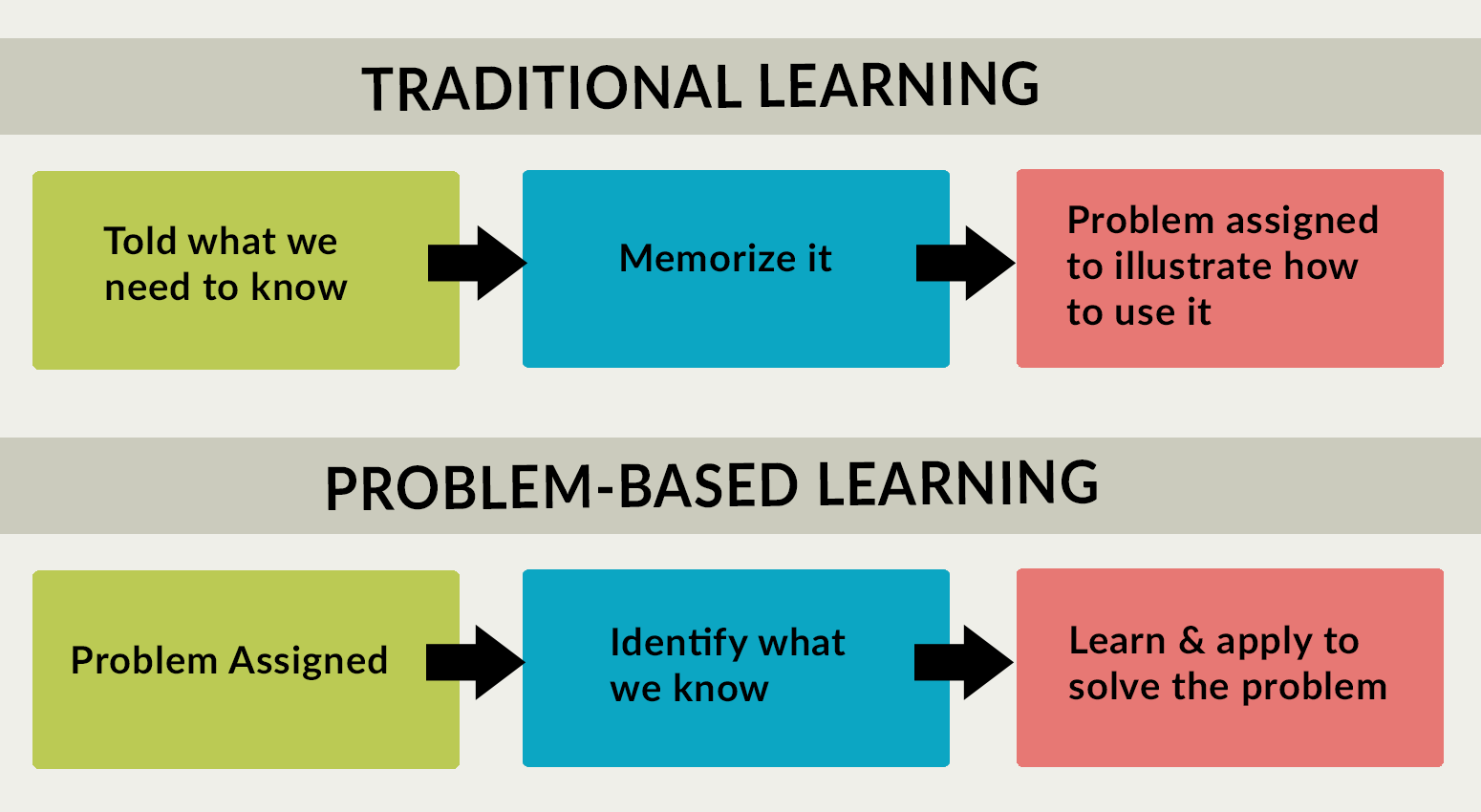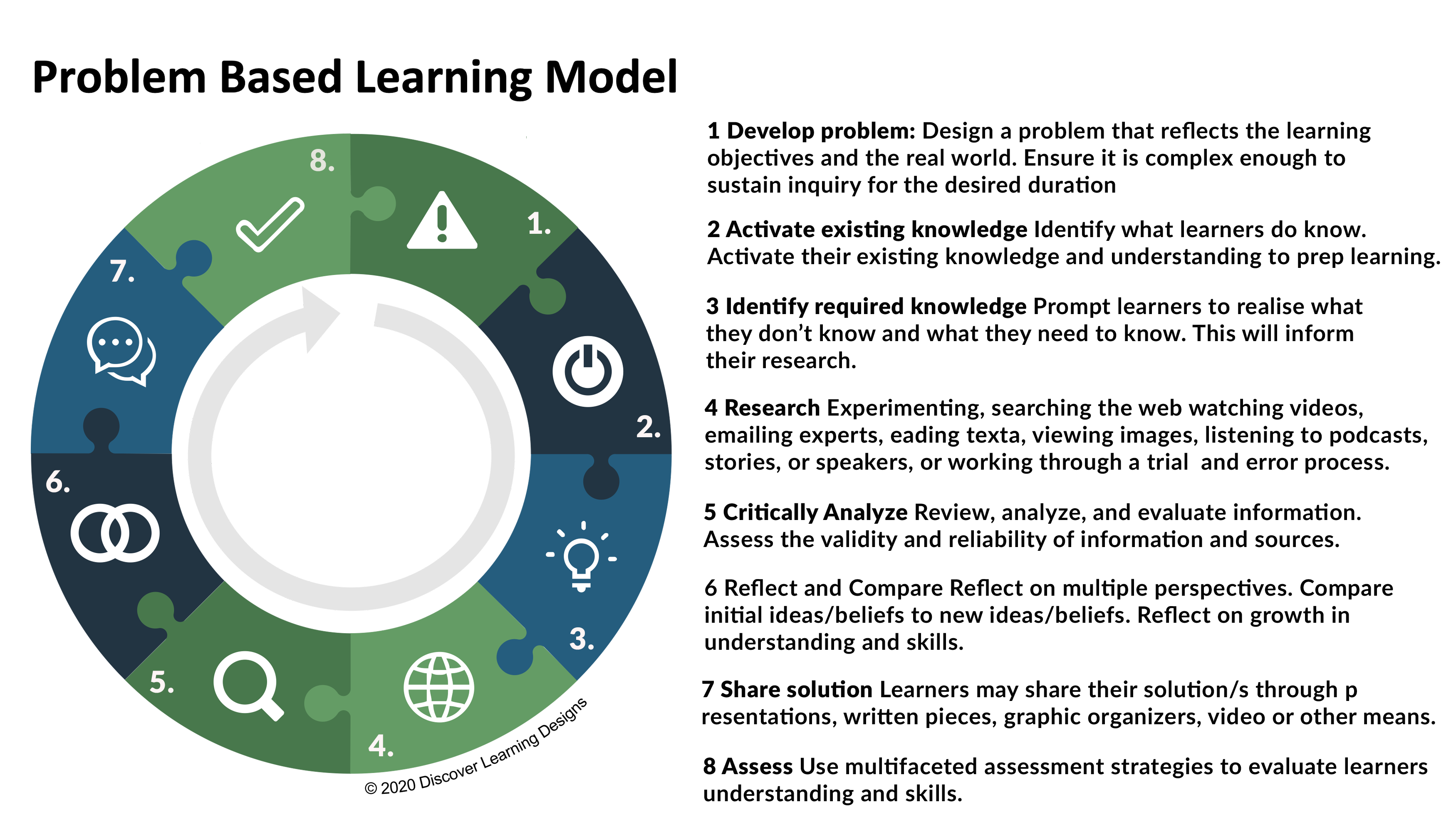Problem-based learning (PBL) puts learners in the driver's seat of their own learning process. The figure below depicts the key difference between traditional and PBL learning approaches.

It may be challenging for some learners to adapt to the PBL approach if they are accustomed to the traditional learning style. The role of the instructor in PBL is that of a facilitator. Initially, the instructor role is critical to clearly explain the PBL process and manage expectations. This will help decrease frustrations with not being told exactly what to study and will increase motivation to take an active role in shaping learning through problem-solving skills, gradually leading to the PBL model of learning depicted below.

PBL sets learners up to engage with real-world problems and tackle issues beyond the classroom, as well as participate in authentic learning experiences that require applied knowledge, critical thinking, and decision-making. This approach is particularly well-suited for public health curricula, as it prepares students for a dynamic, interdisciplinary, professional environment (Biello et al, 2020).
PBL is identified by:
- Learner-directed learning (de Graaff, Kolmos, 2003; Hung, Jonassen & Lui, 2008)
- Critical thinking and decision-making
- Deeper learning during a critical analysis of what information is needed/not needed
- Increased motivation to learn (Woods, 2003)
- Active learning and working in teams (Biello et al., 2020)
- Developing life-long learning skills (Hung, Jonassen & Lui, 2008)
What is the difference between Problem-Based and Team-Based Learning?
1. In PBL, a problem is presented and the learners have to figure out what they need to know to address the problem, where they can get the information, research the information, apply the information to solve the problem, and go through an iterative process of getting more information if needed until a satisfying solution is achieved. In TBL the instructor directs learners to the content that they need to study; learners are responsible for studying the assigned content; then they apply it to a problem that is prepared by the instructor. In contrast,
2. In PBL, having an authentic problem is the defining characteristic of the learning approach. The problems presented in TBL are not necessarily authentic, real-world problems.
References
Biello, S., Yoss, S., Walker, E. R., Druss, B., & Lang, D. L. (2020). Addressing public mental health challenges: A mixed-methods evaluation of problem-based learning. Pedagogy in Health Promotion.
De Graaff, E. & Kolmos, A. (2003). Characteristics of problem-based learning. International Journal of Engineering Education, 19(5), 657-662.
Hung, W., Jonassen, D.H., & Lui, R. (2008). Problem-based learning. In J.M. Spector, M.D. Merrill, J.V. Merrienboer & M.P. Driscoll (Eds.), Handbook of Research on Educational Communication and Technology. (pp. 485-506). Taylor and Francis.
Leon, J.S., Winskell, K., McFarland, D.A., & del Rio, C. (2015). A case-based, problem-based learning approach to prepare master of public health candidates for the complexities of global health. American Journal of Public Health, 105,(S1), S92-S96.


